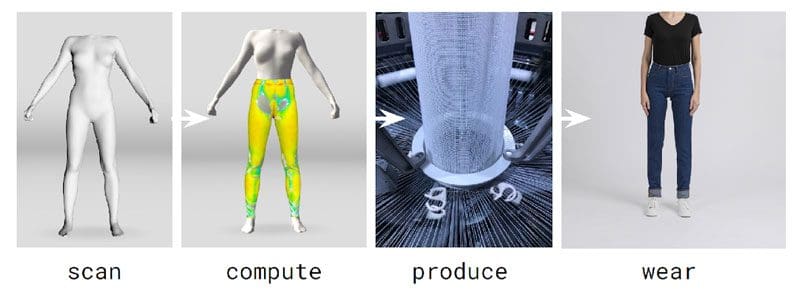The retail industry is in rapid transformation, accelerated by COVID-19. As consumers expect personalized products and experiences, as well as full transparency to responsible sourcing and sustainable practices, digital product creation (DPC) technologies are emerging as a valuable solution enabling companies to reimagine their business models while advancing both sustainability and profitability.
The 2020 Retail Digital Transformation Grand Challenge, co-sponsored by the IEEE Standards Association (IEEE SA), the 3D Retail Coalition (3DRC), and Product Innovation (PI) Apparel, challenges the technology and academic community to offer up innovations and solutions to address these issues while helping build capabilities for the future of retail.
This year’s entries were asked to demonstrate the use of digital product creation technologies in advancing sustainability while reducing their environmental impact and creating value for customers. The entries were impressive, and the judges debated extensively. Among the many creative ideas we have received, we are proud to announce unspun, a pioneering apparel brand that has reinvented the conventional apparel value chain, as the winner of the competition.
Reducing Fit & Sizing Issues
Apparel and footwear account for the highest rate of eCommerce returns in the US, somewhere between 30 to 40%. The biggest reason for these returns is sizing and fit issues. Customers return products because their expectation of how a garment will fit them often does not match the actual fit. In today’s environment, 45% more people are shopping online because either the stores are closed, or they feel safer shopping from the comfort of their home. With fewer people trying on clothes in physical stores, this challenge will continue to grow.
To circumvent fit issues, unspun uses body scanning technology to map a customer’s body shape. This body scan is used to create an avatar, which is used to build a digital custom garment as per the customer’s preference. The digital garments are rendered and used to conduct a virtual fitting, ensuring that the fit is perfect before producing the physical garment. The corresponding digital 2D and 3D patterns can be used during both cut and sew production, along with unspun’s proprietary 3D weaving technology to create a zero-waste product.

Addressing Excess Inventory Issues
Circumventing the apparel industry’s overproduction and inventory management issues, unspun’s on-demand production model also means that they do not carry inventory. Each year, just in the US, unsold inventory equates to about 50 billion USD of lost revenue for apparel companies. Approximately 60% of global apparel inventory is diverted to landfill each year, representing tremendous amounts of wasted resources and 3.8 Gigatons of CO2 emissions annually.
In advancing sustainability, unspun utilizes two key metrics; CO2 emissions and the weight of waste generated through the manufacturing process. Unspun’s innovative manufacturing approach enables them to reduce their carbon footprint while maximizing profitability.
In articulating unspun’s vision for the future, co-founder Beth Esponnette mentioned that the fastest way to multiply their sustainability impact is through collaboration with established companies. unspun’s DPC solution can be leveraged by established brands to re-imagine their own supply chains to increase sustainability and profitability.
Digital Transformation in Action
The Retail Digital Transformation Grand Challenge is an IEEE SA initiative for the retail/apparel industry to explore technology applications and standards enabling next-generation consumer experiences. The project originated with the IEEE SA 3D Body Processing (3DBP) Industry Connections (IC) activity, a collaborative effort to assess standards opportunities intersecting emerging technologies to enhance industries such as retail, medical, health and wellness, and sports and athletics. Participation in 3DBP subgroups and activities is welcomed.








